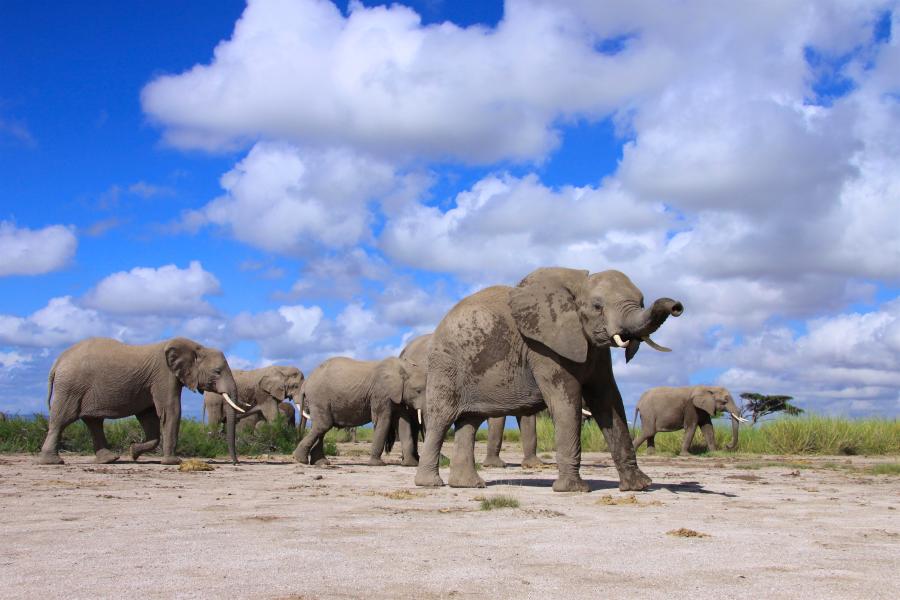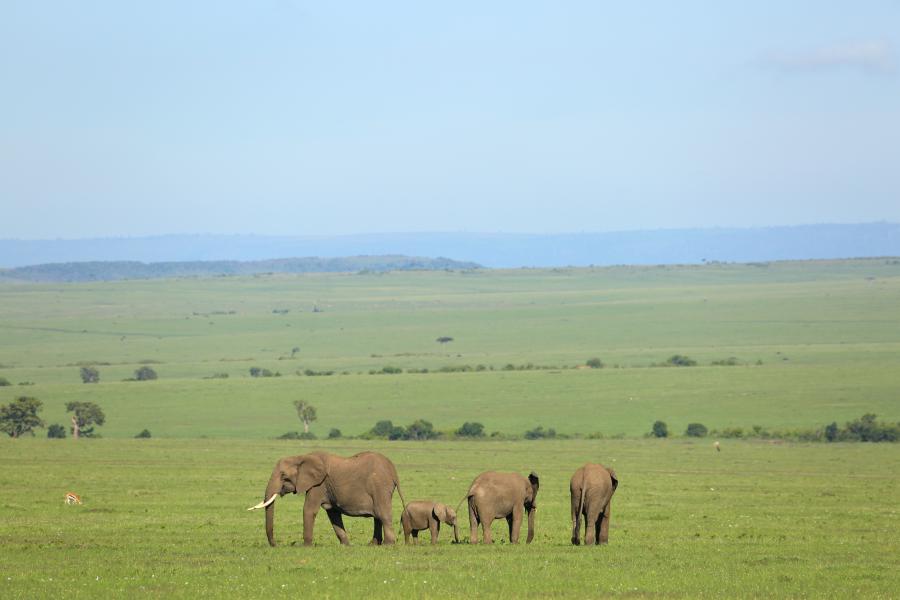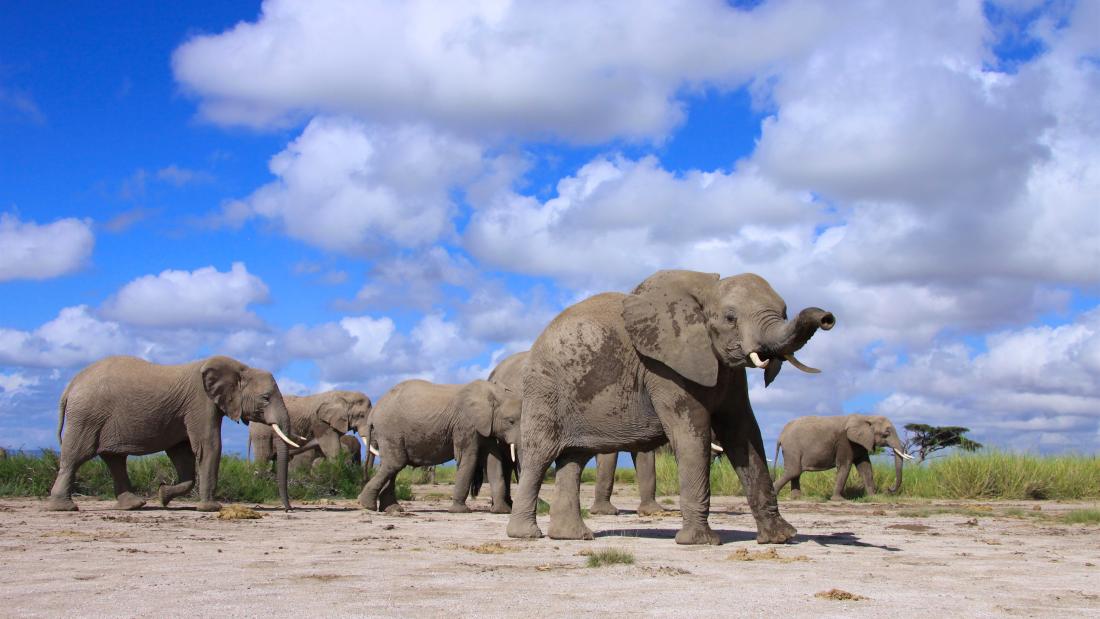Elephants are remarkably consistent in their seasonal movement patterns across multiple years, according to research by Bangor University zoologist and lecturer Dr Rhea Burton-Roberts. Rhea’s findings, published in Scientific Reports, show that elephant family groups in Kruger National Park prefer to remain in areas that they know well, but a lack of food during particularly dry periods can drive them to shift their foraging to less familiar habitats.
A collaborative project involving scientists from the University of KwaZulu-Natal (UKZN), the Indian Institute of Sciences, the Ashoka Trust and South African National Parks, Rhea’s PhD study on elephant movement ecology used eight years of elephant location data collected from 13 elephant family groups in the Kruger National Park, South Africa.
Rhea explains,
“The data collected from GPS collars worn by the elephants recorded their position every 30 minutes, giving us a fascinating insight into their movement behaviour across multiple seasons as food availability and environmental conditions changed.”
Rhea’s analysis revealed that the elephants are very faithful to specific habitats and areas of the 20,000 km2 National Park. Elephants have a diet that shifts seasonally, preferring nutritious grass that is most abundant in the wet season (spring and summer) and switching to woody plants in the dry season (autumn and winter). The greatest variation in their seasonal ranging behaviour was driven by the amount of rainfall, particularly in the dry season.
Elephant family groups


Rhea comments, “If rainfall was higher than usual moving into the dry season, the elephants preferred to remain faithful to their home range, save their energy and make the most of the extended quality and abundance of vegetation.”
It was only when rainfall reduced in this unpredictable time of moving from the wet to dry season, that elephants then began to seek out remaining foraging opportunities and exploit new regions of their home range. The elephants in Kruger appear to be adjusting their seasonal movement behaviour according to environmental conditions to ensure they can meet their considerable energetic and nutritional demands. Indeed, a fully grown adult female needs to eat around 150 kg of food per day.
Key collaborator and data provider, Professor Rob Slotow (UKZN) adds, “Within African savannas, climate change is driving greater variation in rainfall patterns and increased temperatures. Understanding how elephants respond to these changes, particularly to more frequent droughts and scarcity of food plays a vital role in species conservation.”
However, altered movements could have impacts on other species, and also may be a challenge in areas where the habitat is already fragmented and there is considerable conflict with humans.
Co-author Graeme Shannon comments, “The results are fascinating, as it is very interesting to observe how elephants show such consistent use of key habitats, despite their large body size and very generalist diets.”

